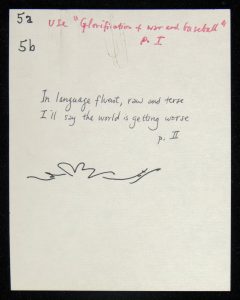AUTHOR: Saku Pinta
Who Killed T-Bone Slim?
PART I
“To say the least, blackout is a promise, a prophecy, foreboding eternal darkness.” These chilling, and perhaps even cryptic words, penned by T-Bone Slim (born Matti Valentininpoika Huhta) appeared in his semi-regular column, published April 4, 1942 in the Industrial Worker, the newspaper of the Industrial Workers of the World (IWW or “Wobblies”) union.
The grim “eternal darkness” that Slim evoked turned out to be all too prophetic, as they would be among his last known words to appear in print. The Finnish-language IWW newspaper the Industrialisti reprinted the column that they appeared in six days later, and then he fell silent. A little over one month later – on the early evening of May 15, 1942 – the lifeless body of T-Bone Slim was recovered from the East River near Pier 9 in New York City.
While the exact date of his death is unknown, the autopsy report produced by the Office of the Medical Examiner – describing an unidentified white male “found floating in water, undetermined circumstances” – estimated that the body had been in the water for about four days. This suggests that Slim passed away on or around May 11th – exactly eighty years ago today.
It is unknown how the medical examiner determined the length of time that the body was in the water. It is not even known who identified the body. Like so many aspects of T-Bone Slim’s enigmatic life it seems that once one mystery is unravelled, another puzzle soon emerges to take its place.
The final spring of Slim’s life, in the city that never sleeps, is no exception. An examination of the most recent discoveries of his final weeks and days is a reminder that “beyond the walls of intelligence, life is defined.” We may never get the answers that we are looking for, but that shouldn’t stop us from looking.
Slim’s last column provides a starting point. Is there deeper meaning behind this “eternal darkness”? Did T-Bone Slim foresee his own death?
Last column in the Industrialisti
To place this passage into context, the “blackouts” T-Bone Slim discussed refer to the blackout and dim-out drills that began in New York in December 1941.These drills began soon after the bombing of Pearl Harbor that same month – along with the entry of the United States into the Second World War – as precautions against German U-boat attacks and possible bombing raids.
In his final column Slim mentions the danger that U-boats posed to sailors on the North Atlantic and the fact that the last three ships to be sunk by torpedoes were north of Norfolk, Virginia. Over the span of around eight months in 1942, German U-boats sank some 500 American ships – killing over 5000 sailors – along the U.S. Atlantic coast in a disastrous, and lesser-known today, series of attacks.
“When New York City is bombed, say May 10-20, you may be sure I will not run.” Slim continued, “I’d be an awful donkey, were I to skedadle, good as my insteps are. No, I would give them the bronx cheer and stand my ground.”
Slim maintains a fatalistic yet defiant tone here. Not only will he not run, but he will stand his ground. However, there is something unsettling about the fact that dates when he expected New York to be bombed are within the date range of when his death and when his body was found. The fact that Slim’s father – with whom he shared a first name and an occupation as a maritime worker – had drowned after plunging into the waters of Erie Bay from Hanna Dock in Erie, Pennsylvania in August 1901, in an apparent suicide, certainly adds a tragic, macabre dimension to Huhta family lore.
Yet the dark tone of Slim’s writing would not have seemed out of the ordinary at the time. It only seems strange with the benefit of hindsight, because the death of T-Bone Slim only became known to the Wobblies and others five months after his body was found in the East River.
Read “Who Killed T-Bone Slim? PART II” here.

